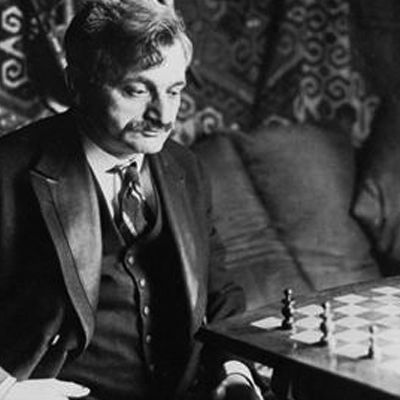
Double-Bishop Sacrifice of Lasker-Bauer Directs Plot of New Best-Selling Novel
A legal thriller novel just published has already earned the top spot on the fiction bestseller list of The New York Times. Is it a mere coincidence that the game of chess is featured in it so prominently?
Chess Directs Book's Plot
Chess is used throughout the book to create images, add mystery, and suggest clues as the plot unfolds. The book, While Justice Sleeps, is a fictional tale set at the U.S. Supreme Court. Prominent among all the chess references is how the historic game between Emanuel Lasker and Johann Bauer in 1889 in Amsterdam that features a double-bishop sacrifice holds the plot together.
Lasker-Bauer Game
By sacrificing both bishops to eliminate the pawn cover around his opponent’s king, Lasker wins material and the game. In the novel, the opponent’s king is the president of the United States — a fictional character by the name of Brandon Stokes who explains that he is quite familiar with “a chess strategy known as the Lasker-Bauer sacrifice.” In describing the sacrifice, Stokes says, “The bishops are interesting pieces. They stand next to the king and queen — the third most important pieces on the board. One might call them the guardians.”

One of the president’s key aides understands the reference and replies: “So Avery Keene [the protagonist] is one of the bishops.” (Want to know which character is the second bishop? Clue: She’s also a woman but you have to read the book.)
A double-bishop sacrifice is an attacking tool that every player should know as GM Daniel Naroditsky explains in an article where he also thoroughly analyzes the Lasker-Bauer game. In the following video for the Saint Louis Chess Club, GM Steven Zierk shows how to use the sacrifice to open an opponent’s castled defense.
The sacrificial pattern has been repeated in several prominent games, notably Aron Nimzowitsch vs. Siegbert Tarrasch (St. Petersburg 1914) and GM Anthony Miles vs. GM Walter Browne (Lucerne 1982). More recent is GM Judit Polgar vs. GM Anatoly Karpov (Seventh Essent 2003) shown below.
Protagonist And Chess Knowledge
Keene, the novel's protagonist, is a law clerk for an associate justice of the U.S. Supreme Court, and she is clearly the most powerful person in the book by controlling life-and-death decisions for the justice, identifying corruption at the highest levels at the White House, and revealing an international scientific conspiracy.
Keene rivals the playing strength of IM Carissa Yip, the new U.S. women’s champion who won five consecutive games in her tournament; the dominant power of Polgar, considered the greatest female chess player ever; and the fighting spirit of GM Aleksandra Goryachkina, the first woman to qualify for the open section of the Russian Championship Superfinal.

A review in The New York Times describes Keene as “a chess genius with an eidetic memory.” Much like the character Beth Harmon who plays moves in her head in The Queen’s Gambit, Keene uses her powerful memory to solve early clues. She remembers the 62-move sequence of a game; however, the notations are in the Hindi language. She succeeds in retyping them onto a computer screen that releases critical clues including a vital message: “Meet me in the square” — an obvious reference to the chessboard but for the novel the way to learn more clues and to find an important character.
Meet me in the square.
—A secret message in the book that has obvious chess connotations.
Praise For Author And Book
The author, Stacey Abrams, is better known for her political career as a state legislator in Georgia and as the Democratic nominee for that state’s 2018 gubernatorial election than as a writer. The book is her first published work of fiction under her name, although she previously published eight novels under the pen name of Selena Montgomery. A tax attorney and voting rights activist, she is also the author of best-selling nonfiction books.

Although American novelist Brad Meltzer claims that the book is full of “legal intrigue, corrupt politicians, and the history of chess,” I wanted chess to be equal in importance to the corrupt politicians who dominate the plot. He also says that the author “proves why the most powerful piece on the board is the queen. Well played and so much fun.” In this case, he is correct.
Other leading novelists also award noteworthy praise on Abrams and the book such as Nora Roberts: “a complex web of politics, raw ambition and deadly deception”; Michael Connelly: “a powerful new voice in fiction”; and Scott Turow: “a first-class legal thriller.”

First edition cover. Photo: Doubleday Books.
In addition to scoring high on The New York Times list, the novel also ranks high on the fiction chart for Amazon and briefly had the most pre-orders of any book. Plans for adapting While Justice Sleeps into a TV series by a subsidiary of Universal Pictures are also in the works but probably won’t have the impact on the chess community that The Queen’s Gambit did.
Importance Of Chess
Even before the protagonist appears, Abrams makes chess an important part of the plot (as early as the second page) with this description: “a chessboard stood in mid-play, the antique wooden pieces beginning to attract particles of dust from disuse.”

The life of the Supreme Court justice is in danger, but before he sinks into a coma, he brags: “But I’ve outsmarted them. Lasker-Bauer, which they will never suspect.” This reference to the Lasker-Bauer game sets the novel in motion, and the reader begins to try to decode the clues. From chess, the justice had learned that he could apply “careful maneuvers and contemplations of endgames… in real life.”
But I've outsmarted them. Lasker-Bauer, which they will never suspect.
—Fictional Supreme Court justice in the novel.
Battling enemies and seeking to reveal a distortion of truth, the justice considers his next move. As Abrams writes, “It was better this way, to wait and see if his opponents accepted his King’s Gambit. An opening sacrifice to strengthen his game.”
In an epigraph, Abrams begins the book with a quotation attributed to Albert Einstein: “Chess grips its exponent, shackling the mind and brain so that the inner freedom and independence of even the strongest character cannot remain unaffected.”
Are you interested in reading an excerpt from the book? Find one here provided by Vanity Fair.
What are your thoughts about the double-bishop sacrifice? Do you know any other sacrifice that has inspired a novel or been used to connect the elements of its plot? Please add your comments below.